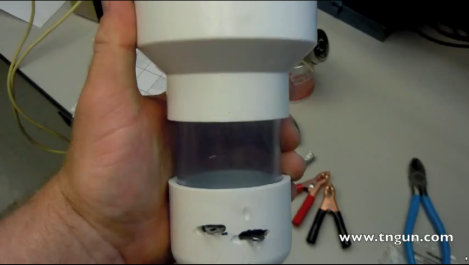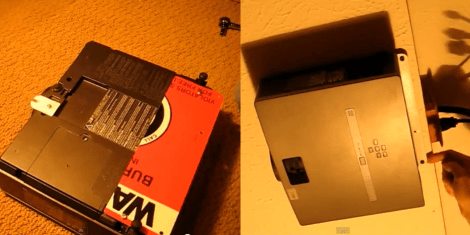
If you plan ahead a little bit you could have your own system of water purification to use in emergencies. Everyone needs clean drinking water and this gadget will let your produce your own purification drops quite easily.
The solution contains chlorine, which is created through electrolysis. The PVC cap seen near the bottom of the image has two electrodes sticking out of it. These are titanium plated mesh plates separated by a rubber ring. The cap has a small hole in it to keep the flow rate low and the fitting at the top acts as a funnel. When you pour in a salt water mixture it passes through the energized plates and a chemical reaction splits the sodium from the chlorine.
A twelve volt power source is necessary for this to work. But since the electrolytic process takes just a minute or two you could easily source the power from batteries charged with solar cells. Check out a full build walk through and demonstration video after the break.
Continue reading “Water Purification Uses Home-built Electrolysis Rig”

















